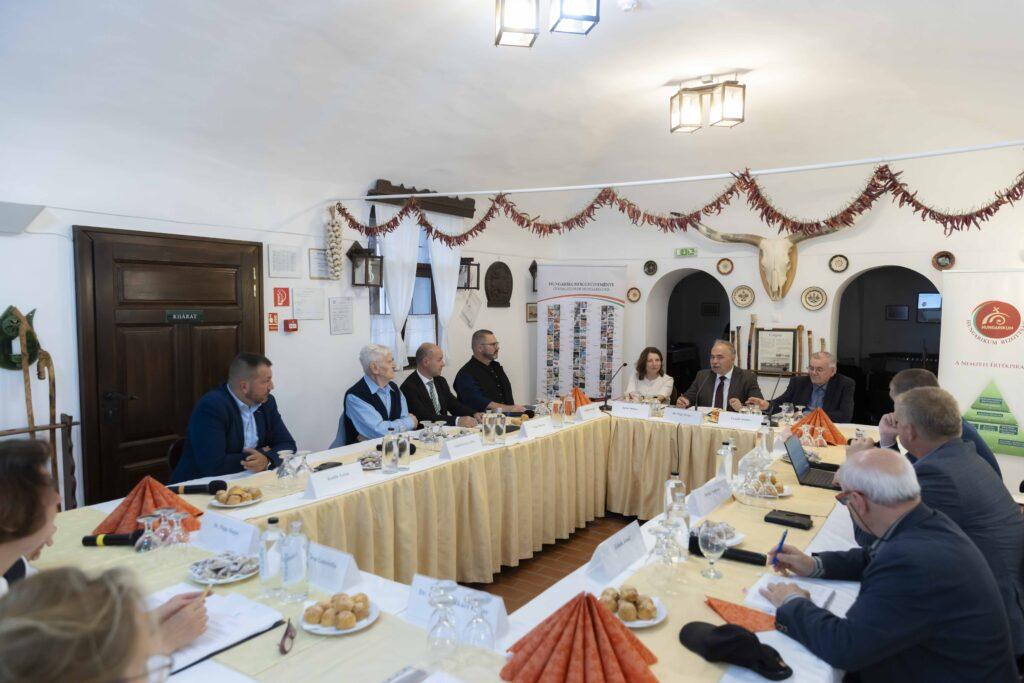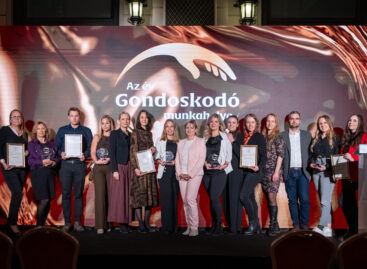The ‘Csárda’ Becomes a Hungarikum at the Historic Hortobágy Inn
At its recent meeting held in Hortobágy, the Hungarikum Committee officially declared the csárda (traditional Hungarian inn) and the Badacsony Kéknyelű grape variety as Hungarikums. Additionally, several new entries were added to the Hungarian Treasury of Values (Magyar Értéktár), including the Conductive Pedagogical System based on the Pető method, fur embroidery from Békés County, and the Hungarian saddle. As a result, the number of recognized Hungarikums has risen to 96, and the Hungarian Treasury of Values now lists 158 items.
 The csárda, a historically distinctive Hungarian hospitality venue that has operated as both accommodation and eatery since the early modern period, was added to the Hungarikum Collection. In a video message posted to social media, Minister of Agriculture István Nagy emphasized that the more than 300-year-old Hortobágy Inn, the venue of the committee’s meeting, is an integral part of Hungarian culture—a preserver and transmitter of heritage—which should fill us with immense pride.
The csárda, a historically distinctive Hungarian hospitality venue that has operated as both accommodation and eatery since the early modern period, was added to the Hungarikum Collection. In a video message posted to social media, Minister of Agriculture István Nagy emphasized that the more than 300-year-old Hortobágy Inn, the venue of the committee’s meeting, is an integral part of Hungarian culture—a preserver and transmitter of heritage—which should fill us with immense pride.
He also announced the inclusion of the Badacsony Kéknyelű in the Hungarikum list. This is particularly significant, as this grape variety is cultivated on only about 45 hectares. Wines made from this grape have on occasion been awarded the title of best wine in the world. Kéknyelű is considered an autochthonous variety, meaning it is native and has remained in its original area of origin.
Also added to the Hungarian Treasury of Values is the Conductive Pedagogical System based on the Pető method, which supports individuals with motor disabilities in physical and emotional development, regaining abilities, and social integration. Globally unique, this system is integrated into both public education and healthcare in Hungary.
From today, fur embroidery from Békés County also forms part of the national heritage. According to the minister’s video, this craft is still practiced by vibrant communities whose recognition is essential for preserving traditions for future generations. The furrier craft appeared in an organized form in the early 18th century with the establishment of the first guild. During the 19th century, as the county’s economy grew, so did demand for quality interior design and refined clothing. Ornately embroidered sheepskin coats and cloaks became widespread attire. In 2021, “The Living Tradition of Békés County Fur Embroidery” was also added to Hungary’s National Inventory of Intangible Cultural Heritage.
The minister highlighted the committee’s pride in recognizing the Hungarian saddle as a national value. The saddle played a central role in many heroic deeds. According to the committee’s report, based on previous research and analyses of the richest and most prestigious museum collections, the Hungarian saddle is part of Eastern cultural heritage. After Hungarians settled in the Carpathian Basin, the saddle underwent internal development, resulting in what is now recognized as the Hungarian saddle. Its most widespread variant, the Tiszafüred saddle, was held in high regard in both everyday life and festive occasions—until its decline in practical use.
Minister István Nagy concluded his message by stating that with today’s decisions of the Hungarikum Committee, “our national identity has grown stronger and richer than it was yesterday.”
Related news
Hungaricums show the diversity of Hungarian identity
🎧 Hallgasd a cikket: Lejátszás Szünet Folytatás Leállítás Nyelv: Auto…
Read more >AM: new items added to the Hungarikum Collection and the Hungarian Heritage Archive
🎧 Hallgasd a cikket: Lejátszás Szünet Folytatás Leállítás Nyelv: Auto…
Read more >Related news
Recent research: Hungarians believe these are essential parts of Christmas
🎧 Hallgasd a cikket: Lejátszás Szünet Folytatás Leállítás Nyelv: Auto…
Read more >More than 5 million forints donated as a result of the charity wine auction
🎧 Hallgasd a cikket: Lejátszás Szünet Folytatás Leállítás Nyelv: Auto…
Read more >Lidl, Novartis and HungaroControl are also among the best places to work
🎧 Hallgasd a cikket: Lejátszás Szünet Folytatás Leállítás Nyelv: Auto…
Read more >






